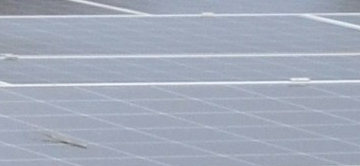The smoke rising from COP21 on 12 December 2015 was more grey than white. Habemus pactum! It's better than nothing, but the smoke above Paris still contains high particle counts and greenhouse gases.
Like everyone else, economists are delighted that all the countries were able to come to an agreement. But, like everyone else, they are wondering what mechanisms will ensure the objectives are met. Unfortunately, the Paris agreement leaves out the most efficient tool for coordinating action: a carbon emissions market. In the published text,[1] you won't find any mention of the words "price", "tax" or "trade", and while the word "market" appears five times, it is always prefixed with "non" (non-market approaches).[2] We have already discussed the merits of the market in a previous article. At the time, some of our readers rightly noted that we could have gone into greater detail about the European market for carbon allowances. This article aims to address that oversight.
Despite what its detractors believe, the European carbon market is in good working order. It reduces industrial greenhouse gas emissions efficiently and it provides precious information about the true costs of emitting tonnes of CO2 into the atmosphere ... given the environmental policy adopted by European authorities. If there is a problem, it is in the way the market has been designed and the ways in which it is manipulated.
1. Reducing greenhouse gas (GHG) emissions
Those who believe that the European Union's environmental policy is an irredeemable failure should take a glance at the Commission's 18 November 2015 report.[3] This report shows that the intensity of GHG emissions in the EU (that is to say, the ratio of emissions to GDP) has practically halved between 1990 and 2014. Indeed, GHG emissions, which have dropped by 23%, are no longer in line with GDP, which has increased by 46%.

This might sound like good news, but there is plenty to be concerned about. First, the path ahead is daunting, with a targeted 40% reduction in GHG emissions between 1990 and 2030. Emissions should currently be at the level represented by the small triangle at the bottom left of the graph. However, within the current regulatory framework, there will only be a 27% reduction, leaving emissions represented by the blue column, which are 25% too high. EU member states must therefore adopt new mechanisms, which go beyond current policies.
The second piece of bad news is that the improvement in emissions intensity has happened over the past ten years, thanks to very low rates of GDP growth.[4] Of course, one shouldn't imagine that green growth is possible at the same rate as an economy which has not committed to de-carbonisation.[5] But we could do better if politicians gave clear signals to individual decision-makers rather than trying to control their activities, particularly if they allowed the carbon market to play the pivotal role it should.
2. Prices act as a signal
What could be more straightforward than a market? Suppliers, who know their costs, meet buyers, who know how much they can afford. They negotiate, fail to reach an agreement, and leave their separate ways, or agree to a transaction that will profit both parties. Billions of individuals do this every day, exchanging salad, music files, or shirts. So why has the Emissions Trading System (ETS)[6] which has been in place since 2005 received such bad press?
Those who are radically opposed to a market solution point to the intrinsically perverse idea of being able to buy the right to behave badly (in this case, the right to pollute). The response is that, without a cap-and-trade system (or a tax), polluters would pollute even more. The reduction in emissions since 2005 hasn't come out of nowhere.
And then there are those who have been let down by the market, who expected more, especially that prices would rise high enough to encourage investment in low carbon technologies such as renewables, nuclear power, or carbon capture and storage. And let us not forget the politicians who hoped that auctioning off emissions allowances would generate substantial income for public treasuries.
All of them have forgotten that markets return prices in the same way that thermometers return the temperature. Under the emissions trading prescription, the current temperature of the patient is below 10 euros per tonne. For some, this merely shows that the condition of the patient is not that serious. For others, it is indicative of a treatment gone seriously awry.
3. The inflated costs of European policy
Two groups of reasons explain why the price per tonne of carbon is so low: like in any market, prices are low either because of high supply or low demand. The original feature of the ETS[7], is that supply and demand are under the control of public authorities, who can reduce the former or stimulate the latter to raise prices if they wish.
On the supply side, permits are allocated free of charge or, increasingly, auctioned off by national and local authorities on the basis of information provided by IPCC on the relationship between the flow of emissions, GHG accumulated in the atmosphere and acceptable increases in temperature. Two elements disrupt control over how allowances on offer develop from year to year (a reduction of 1.74% per year is currently planned and 2.2% from 2021). On the one hand, the businesses involved are able to hold onto some of the allowances they receive and use them at a later date rather than sell them immediately at a low price. On the other, there is the Clean Development Mechanism whereby industrialized countries pay for projects which reduce or avoid emissions in less wealthy nations who are not subject to the Kyoto Protocol and in return receive credits to achieve their emissions objectives.[8] In short, the annual permit offer is essentially, but not entirely, under the control of European authorities.
The need to control demand is sending out mixed signals. On one hand, the Commission is obstinately trying to stimulate the market by adding gases to the list of greenhouse gas emissions (nitrous oxide and fluorocarbon on top of CO2) and extending the list of sectors involved (civil aviation has joined electric power stations and high-energy industry). On the other hand, demand has been reduced by policies that favour renewables and energy efficiency. If Member States must consume less energy and generate more from sources that do not produce greenhouse gases, the need to use polluting technologies is reduced, and with it the demand for permits to pollute. Furthermore, with the financial crash reducing industrial activity, there is a strong downward pressure on the price of CO2.
4. The remedies of Dr Quack
If they want to increase the price of carbon (without a clearly defined target), the European authorities have access to a simple solution: reduce the volume of quotas auctioned or allocated free of charge every year.
To stimulate the market, the Commission has decided to delay the auction of a certain number of allowances for 2014, 2015 and 2016 to re-introduce them in 2019 and 2020.[9] This is not a straightforward cancellation, but a deferral based on the theory that current low levels of demand will not continue until the end of the period in question.[10] Between July 2014 and September 2015, the reduction of around 700 million tonnes of CO2 sold in auctions drove the price up from €6 to €8 per tonne. We are still far from €100 which, it is said, will make it profitable to capture and store CO2 emissions.
This deferral is a risky bet - nobody can exclude the possibility that economic activity (and therefore demand for rights to produce emissions) will not be even more depressed in future. The main inconvenience with this policy is that we are in a multi-year system encompassing 2013 to 2020. Like in sport, you can't change the rules half way through the game, otherwise the players will stop following them: they will be expecting further changes. The more suspicious players may worry that the "deferred" allowances will not be re-introduced in 2019 and 2020.
A more radical reform will be introduced in Phase 4 of the ETS: the Commission had the European Parliament establish a Market Stability Reserve.[11] This is a tool to gradually reduce the stock of excess allowances, that is to say, allowances which have been hoarded since 2008 (the total volume of allowances made available minus recorded emissions). This surplus is almost equivalent to the total amount of new yearly permits (two billion tonnes), meaning that businesses have little incentive to purchase new emissions rights. The plan is therefore that, from 2020, 12% of the stock of unused allowances held by businesses (or at least 100 million tonnes) will be removed from the quantities that have to be auctioned off, and held in the stability reserve. If there is a year in which unused stock falls below 400 million tonnes, the quotas auctioned will be increased by 100 million tonnes, taken from the reserve.
The Commission's rationale behind this mechanism is to ensure that businesses required to take part in the carbon market don't make poor technological choices when faced with fluctuating prices which are, on average, too low. But nobody knows exactly what "too low" means, and European decisions are not based on any econometric studies that would link prices with variations in volume. Instead, this is a paternalistic system aimed at forcing the market to do what authorities decree. The good news is that investors will have greater visibility in phase IV (2021-2030). The bad news is that nobody seems to have produced a study of how businesses will behave within this new regulatory framework.
Like most public decision-makers, the Commission has succumbed to the "temptations of the regulated market": when the price returned by the market does not meet the expectations of decision-makers, they try to bring about the "right" price through some combination of injections and purges. More often than not, the new rules do not achieve the desired objective, and must be changed. With rules constantly being changed, investors stop investing. This explains the difficulties of financing new power stations in the UK despite a capacity mechanism being put in place.
* * *
In conclusion, it should be remembered that the European emissions allowances market only applies to 12,000 industrial and civil aviation businesses; this corresponds to less than half of the emissions in the European Economic Area. For the other half, the Commission wants a reduction of 30% on 2005 levels by 2030. But the means of achieving this has been left up to Member States, just like for renewables and energy efficiency.[12] If Member States do not use market prices as an indicator to fight these non-market emissions, national policies will become disjointed, which, once again, will be less cost-effective than a co-ordinated policy.
It would be a shame to finish this last article of 2015 on a pessimistic note. After all, a worldwide agreement on the environment is quite a Christmas present.
So Merry Christmas, and a Happy 2016!
[2] To be fair, page 19, paragraph 137 states that "[The Conference of the Parties] also recognizes the important role of providing incentives for activities to reduce emissions, including tools such as domestic policies and carbon pricing".
[3] Climate action progress report, including the report on the functioning of the European carbon market and the report on the review of Directive 2009/31/EC on the geological storage of carbon dioxide, COM(2015) 576 final; http://ec.europa.eu/transparency/regdoc/rep/1/2015/EN/1-2015-576-EN-F1-1.PDF
[4] It should be noted that the figures relate to current EU members, including countries which were not members in 1990, in particular countries which belonged to the Soviet bloc and were using economically inefficient and environmentally harmful technologies. 1990 therefore corresponds to peak emissions.
[8] Allowances that can be traded on the European market are also generated through the "joint implementation mechanism" whereby European businesses invest in non-European countries that have signed the Kyoto Protocol, http://unfccc.int/2860.php.
[9] See the final page of http://eur-lex.europa.eu/legal-content/EN/TXT/PDF/?uri=CELEX:32014R0176&from=EN
[12] In its June 2014 " Guidelines on State aid for environmental protection and energy 2014-2020", the European Commission sought to establish a little order in its renewable energy support for member states policy; http://eur-lex.europa.eu/legal-content/en/TXT/PDF/?uri=CELEX:52014XC0628(01)&from=en





